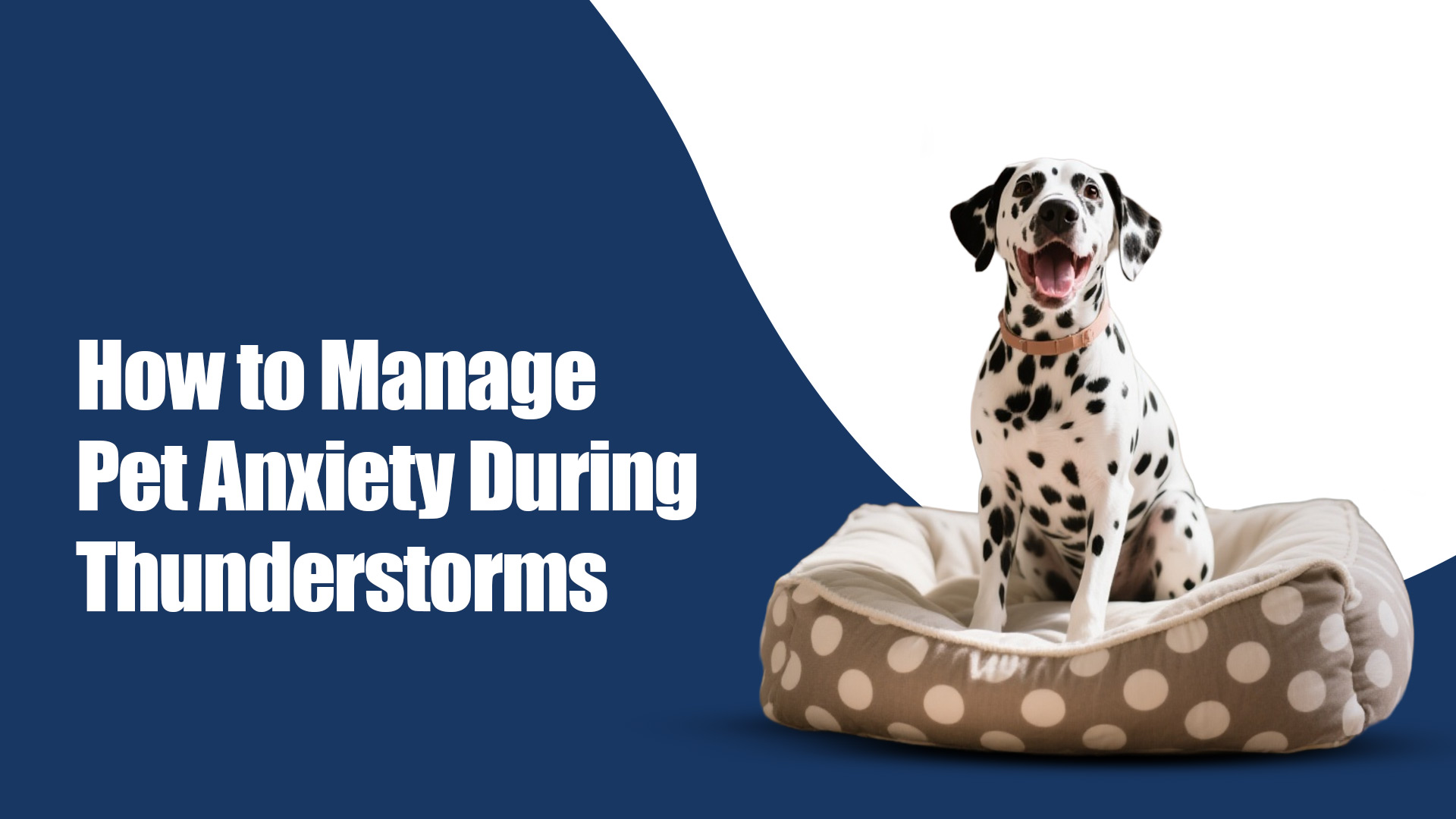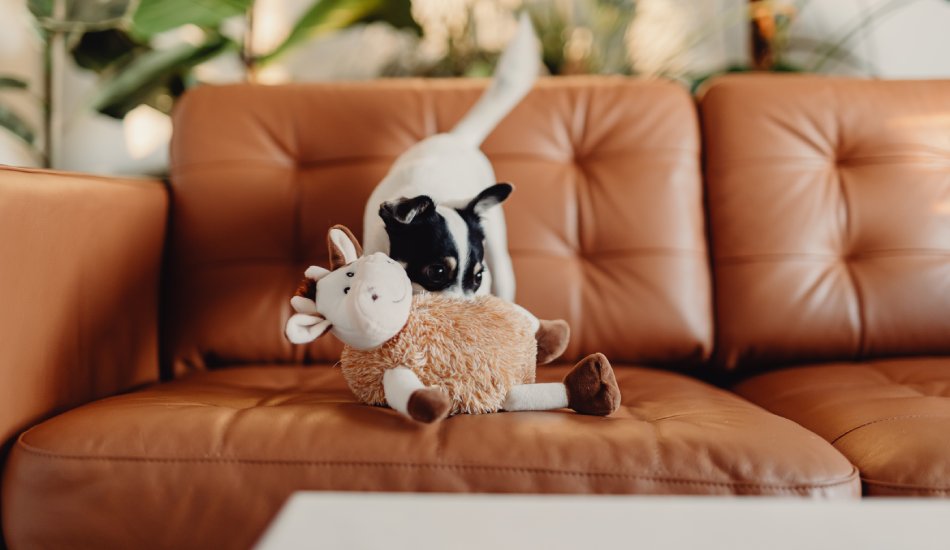Managing Pet Anxiety During Thunderstorms: Calm Tips That Work

A sudden crack of thunder. A flash of lightning. And in the blink of an eye, your normally calm pet is hiding under the bed, pacing nervously, or trembling uncontrollably.
Thunderstorm anxiety is real and common in both dogs and cats. While some pets may simply bark at the noise, others experience full-blown panic. And as a pet parent, it can feel helpless watching them suffer.
But there’s good news: with the right tools, techniques, and mindset, you can manage your pet’s storm-related stress and help them feel safer, calmer, and more secure. This guide breaks down why thunderstorms cause anxiety, what signs to look out for, and most importantly calming strategies that actually work.
Why Do Pets Get Anxious During Thunderstorms?
It’s not just the sound. Thunderstorms affect pets in multiple ways:
- Loud, unpredictable noises (thunder, rain on rooftops)
- Flashes of light (lightning) that disorient them
- Static buildup in the air that causes discomfort especially in dogs
- Barometric pressure changes they can sense before storms begin
- Scent cues like ozone or rain that signal danger to their instincts
- Past trauma or lack of desensitization in early life
Thunderstorm anxiety can worsen over time if left unaddressed. That’s why early intervention is key.
Signs of Thunderstorm Anxiety in Pets
Every pet reacts differently, but here are common behaviors to watch for:
Dogs:
- Trembling or shaking
- Whining, barking, or howling
- Hiding under furniture
- Pacing or restlessness
- Panting or drooling
- Attempting to escape or scratch doors/windows
Cats:
- Hiding in closets or under beds
- Flattened ears and wide eyes
- Refusal to eat
- Excessive grooming
- Growling or aggressive behavior when approached
If your pet shows these symptoms regularly during storms, it’s time to step in with support.
7 Proven Ways to Help Your Pet Stay Calm During Thunderstorms
1. Create a Safe, Quiet Space
Set up a designated “calm zone” where your pet can retreat during storms. Choose an interior room or corner with minimal noise and light.
What to include:
- Their bed or crate
- Familiar toys or blankets
- Curtains or blackout blinds to reduce lightning flashes
Make this area accessible at all times so they can go there voluntarily when they feel nervous.
2. Use Calming Products
Natural calming aids can help take the edge off anxiety when used consistently.
Try:
- Anxiety wraps or compression vests (e.g., Thundershirt)
- Pet-safe calming sprays or diffusers with ingredients like lavender or valerian
- Chews and treats containing L-Theanine, melatonin, or chamomile
- Desensitize Through Training
If your pet’s fear isn’t extreme, gradual desensitization can help reduce sensitivity to storm-related triggers.
How it works:
- Play recorded thunder sounds at a low volume while engaging in a fun activity
- Slowly increase the volume over days or weeks while pairing it with treats, play, or praise
- Stay calm yourself, your energy affects your pet’s
This method takes time but is highly effective when done correctly.
4. Stay Calm and Present
Your pet looks to you for cues. If you appear nervous or over-comfort them in a panicked tone, they may believe the fear is justified.
Do:
- Sit near them without crowding
- Speak in a calm, neutral voice
- Distract them with toys or gentle play if possible
Don’t:
- Scold or punish anxious behavior
- Force them to leave a hiding spot
- Smother them with attention if they prefer solitude
Trust and calm companionship can go a long way.
5. Provide Distractions
Engaging the mind is one of the best ways to redirect fear. Keep a few mentally stimulating activities ready for stormy days.
Ideas:
- Puzzle feeders or snuffle mats
- Treat-dispensing toys
- Training new tricks or commands
- Chewing toys (great for dogs who chew to self-soothe)
For cats, try wand toys, treat balls, or laser games in their safe zone.
6. Grooming & Touch Therapy
Gentle grooming or massage can have a naturally calming effect. Many pets feel grounded when their body is touched gently and consistently.
Use long strokes, low pressure, and a quiet environment. You can also try pet-safe calming oils during massage.
7. Talk to a Vet
If your pet’s anxiety is severe, refusing food, injuring themselves, or showing long-lasting distress,
Consult a Veterinarian. Medication or behavior therapy might be necessary, especially in older pets or those with trauma history.
Zigly’s in-house vet care experts can help assess whether your pet needs professional behavioral support or medical intervention.
Long-Term Tips to Keep in Mind
- Track the weather forecast: Anticipate storms and prep your home and pet ahead of time.
- Avoid sudden changes: Keep feeding, walking, and sleeping schedules consistent.
- Reinforce calm behavior: Reward your pet for staying composed or using their calm zone.
- Limit outdoor exposure: Avoid walks just before or during a storm, when static or pressure changes peak.
Conclusion
At Zigly, we understand that pet care isn’t just about food and grooming, it’s about emotional well-being, too. Thunderstorms can shake your pet’s sense of safety, but with the right support system, they don’t have to suffer in silence.
Because a calm pet is a cared-for pet. And Zigly is here to help you care better, every season, every storm. Visit www.zigly.com or step into your nearest Zigly Experience Centre to make monsoon anxiety a thing of the past.
















The information below is required for social login
Create New Account